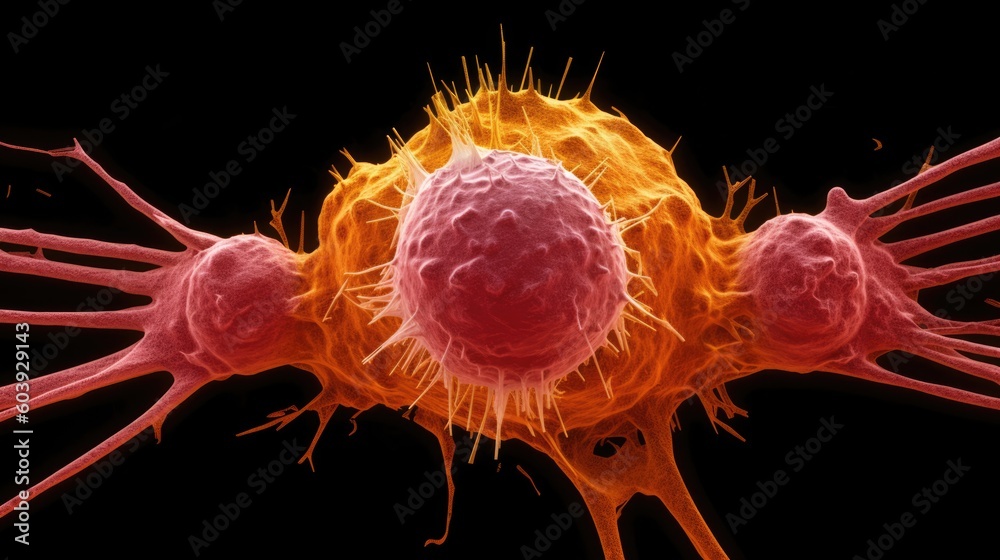Demystifying Cancer: Understanding Carcinogenesis, the Process of Cancer Development
Share IT

Launch Your Dream Website with Us!
Click Here to Get in touch with Us.
Categories
Carcinogenesis
Revealing the Enemy: An Extensive Exploration of Carcinogenesis
Cancer is not a singular illness, but rather the end result of a convoluted process known as carcinogenesis that involves cellular alteration. This blog post explains the complex processes that turn healthy cells into malignant ones, giving you more understanding about the pathogenesis of cancer.
Thank you for reading this post, don't forget to subscribe!Table of Contents

The Markers of Carcinogenesis: Normal Cells to Malignancy
Carcinogenesis takes time to develop. It’s a multi-step process with different cellular and genetic changes. Scholars have distinguished a number of crucial characteristics that define this shift:
- Maintaining Proliferative Signalling: Growth regulation systems are inherent in normal cells. These mechanisms break down in cancer, causing unchecked and unrelenting cell division.
- Avoiding Growth Suppressors: Genes that inhibit growth are present in healthy cells. Cancer cells figure out how to get around these growth suppressors so they can proliferate unrestricted.
- Resisting Cell Death: Damaged or aged cells usually go through a process known as programmed cell death, or apoptosis. Cancer cells create defences to avoid this inevitable demise and live longer.
- Facilitating Replicative Immortality: Regular cells divide only a finite number of times in their lifetime. Cancer cells develop the capacity for endless division, which promotes unchecked development.
- Inducing Angiogenesis: In order to proliferate and endure, tumours need a plentiful blood supply. To feed themselves, cancer cells encourage angiogenesis, the growth of new blood vessels.
- Activating Invasion and Metastasis: Cancer is extremely harmful because of this characteristic, which activates invasion and metastasis. Cancer cells acquire the capacity to infiltrate adjacent tissues and spread via the lymphatic or circulatory systems to form new tumours (metastasis) at remote locations.
- Tumor-Promoting Inflammation: By fostering an environment that encourages cell growth and survival, chronic inflammation can play a role in the development of cancer.
- Genome instability and mutation: The genetic code that governs the behaviour of cells, DNA, becomes mutated in cancer cells. The above-mentioned aberrant features are fueled by these mutations.
- Deregulating Cellular Metabolism: In order to sustain their quick development and survival, cancer cells alter their metabolism. Their attention moves from efficiently manufacturing energy to creating the building blocks required for quick cell division.
- Avoiding Immune Destruction: Anomalies are eliminated by our immune system. Cancer cells create defences against immune cells so they can’t be found and destroyed.
Comprehending these distinguishing features is essential for creating tailored treatments that can halt these mechanisms and impede the development and dissemination of cancer.
Beginning, Ending, and Moving Forward: The Carcinogenesis Stages
Three broad stages can be distinguished in carcinogenesis:
- Initiation: The first time a mutation is incorporated into a cell’s DNA, it is called an initiation. Certain viruses, radiation, and chemicals (carcinogens) can all act as initiating agents. But frequently, this early mutation is insufficient for the development of cancer.
- Promotion: Prolonged exposure to promoting chemicals can increase the proliferation of started cells while also possibly causing mutations. Hormones, long-term inflammation, and certain lifestyle choices like smoking or binge drinking are examples of agents that can promote.
- Progression: This is the last stage, during which more mutations occur and the initial cell develops all the characteristics of cancer, turning it into a malignant entity with the capacity for unchecked growth and dissemination.
It is crucial to remember that this is a simplified model and that, depending on the particular form of cancer, carcinogenesis can be a complicated and unpredictable process.
Taking the Lead: Preventive Techniques
Although the complexities of carcinogenesis are intriguing, there is good news: a large number of risk factors for the development of cancer are changeable. A healthy lifestyle can help you lower your risk considerably:
- Keep Your Diet Healthy: Consume a diet high in fruits, vegetables, and whole grains that is well-balanced.
- Exercise Frequently: Engaging in regular physical activity lowers the risk of cancer among its many other health advantages.
- Control Your Weight: A number of malignancies are predisposed to obesity. Keeping your weight in check can greatly reduce your risk.
- Limit Alcohol Consumption: Drinking too much alcohol raises the risk of cancer.
- Steer clear of tobacco products: The single biggest risk factor for many cancers is smoking. It is essential to stop smoking or to stay away from secondhand smoke.
- Use sunscreen: wear protective clothes, and seek out shade to protect your skin from prolonged sun exposure.
- Minimise Environmental Exposures: Take precautions to lessen exposure and be aware of any possible carcinogens in your surroundings.
- Screenings on a Regular Basis: Plan for the recommended cancer screenings to detect the disease early and provide more effective and timely treatment.
Gaining knowledge about carcinogenesis gives you the ability to control your health and make wise decisions. Making healthy living a priority and reducing your risk factors will help you drastically lower your risk of cancer.

Launch Your Dream Website with Us!
Click Here to Get in touch with Us.





























































Recent Comments